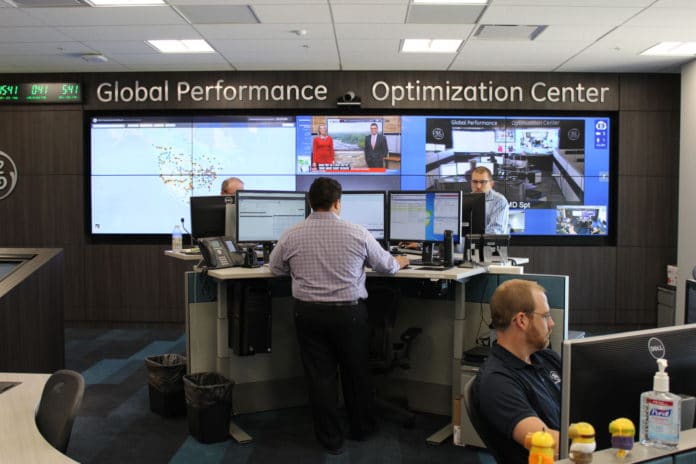There are lots of trains in the world. For them to run efficiently, consistently and safely requires a lot of monitoring.
GE Transportation is playing a major role in making certain of that. The company recently unveiled its newest Global Performance Optimization Center (GPOC) in Fort Worth. It joins other such centers in Erie, Pennsylvania, Brazil and Kazakhstan.
The centers, which are basically mission control for trains, collectively monitor about 17,000 locomotives worldwide. They operate 24 hours a day, seven days a week, staffed by teams of three or four experts per shift, providing true condition-based repair instructions.
GPOC experts average over 15 years of experience.
“The locomotives today are like rolling data centers that are continuously sending information from their 250 sensors,” said Tim Bader, senior business communications leader for GE Transportation’s global supply chain and global technology.
The centers receive about 2.5 million messages each day. These messaged are processed into about 500 “cases” per day, which are then reviewed by onsite experts.
The experts issue about 300 instructions per day to various field service teams. Each is a detailed trouble-shooting instruction for a specific issue. The field teams execute these and provide feedback on the work done.
The time between the alert message being received and the instructions being issued is no more than 15 minutes, company officials note.
“The center digitally monitors locomotives in real time to determine their performance,” Bader said.
This provides advanced notification of imminent failures and allows the locomotives to be routed for repair, avoiding main line failures and train delays, perhaps even helping avoid accidents, officials say. Having advanced notices allows shops to plan labor, parts and locomotive placement, and saves shop labor by reducing troubleshooting time.
The system also helps to reduce repeat failures.
“Digitization of rail is one of the biggest opportunities in the industry today,” Bader said. “The GPOC is a perfect example of the people, services, technology and scale GE provides to better support our customers.”
The centers monitor locomotives all over the world that the team is working, the weather and connections with other GPOCs for collaboration.
The GPOC is like a central doctor that analyzes all failure modes. This knowledge is shared with all customers (independent of fleet size or age), something the company says can improve locomotive reliability and availability by over 20 percent.
In general, the GPOC addresses about 80 percent of the failures that can affect a locomotive. These include engine, propulsion, auxiliaries, computers, communications, crew interfaces and train control systems.
In addition to GE locomotives, it also provides services on non-GE locomotives, off-highway vehicles, marine vessels and stationary power systems. –








